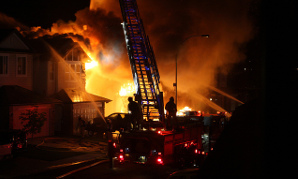 The British media has been busy recently with reports of fires caused by e-cigarettes. But do the numbers support the scare?
The British media has been busy recently with reports of fires caused by e-cigarettes. But do the numbers support the scare?
Research from the Press Association, the main UK national news agency, found that fire departments blame e-cigarettes for 62 fires this year and 43 in 2013. This figure, which has attracted headlines in national media, does represent a significant increase from the eight that occurred in 2012.
But it is still a minuscule proportion not only of all accidental fires, but also of fires caused by electric, non-cooking devices – the category into which e-cig fires fall.
According to other data from the UK government’s Department for Communities and Local Government, 2013 saw around 36,384 accidental fires in dwellings. Of these, 4,551 fires were caused by electrical appliances other than those used for cooking, central and water heating appliances, or blow-lamps, welding and cutting equipment. The e-cig figure for 2013 would therefore represent about 1% of this category, and so far less than 2% for 2014.
Meanwhile, conventional tobacco caused 2,318 fires in 2013, or about 50 times as many as e-cigs. It also was the most lethal means of ignition with 82 fatalities. By comparison, fires started by cooking appliances only caused 27 fatalities, although they were the source of ignition in 18,763 cases (just over half of all accidental dwelling fires).
However, these central government figures do not break down electrical appliance statistics into specific types of device. In order to obtain its e-cigarette numbers, the Press Association therefore put freedom-of-information requests into all 51 UK fire services and received 43 responses. Although the numbers are not complete, they point to e-cigarettes remaining a minor cause of fires (about 0.1% of the total number of incidents last year).
The Chief Fire Officers Association offered e-cigarette users advice on minimising risk, including using the correct charger, removing the battery from charging when complete instead of letting it over-charge, and never charging a battery that shows signs of damage.
What This Means: The Press Association may have missed the point by concentrating on e-cigarettes. Not only are they the source of ignition in only a very small proportion of fires, all examples of e-cigarette fire incidents ECigIntelligence saw were in fact caused by chargers. This is an electrical safety issue (and possibly, at least sometimes, a user ignorance issue), not something innate to e-cigs.
Noteworthy in this context is the attention given to batteries in the proposed British Standards Institution guidelines for e-cigs; improvements to products and instructions may extinguish the problem.
– Freddie Dawson ECigIntelligence staff
Photo: Stephen Salomons






